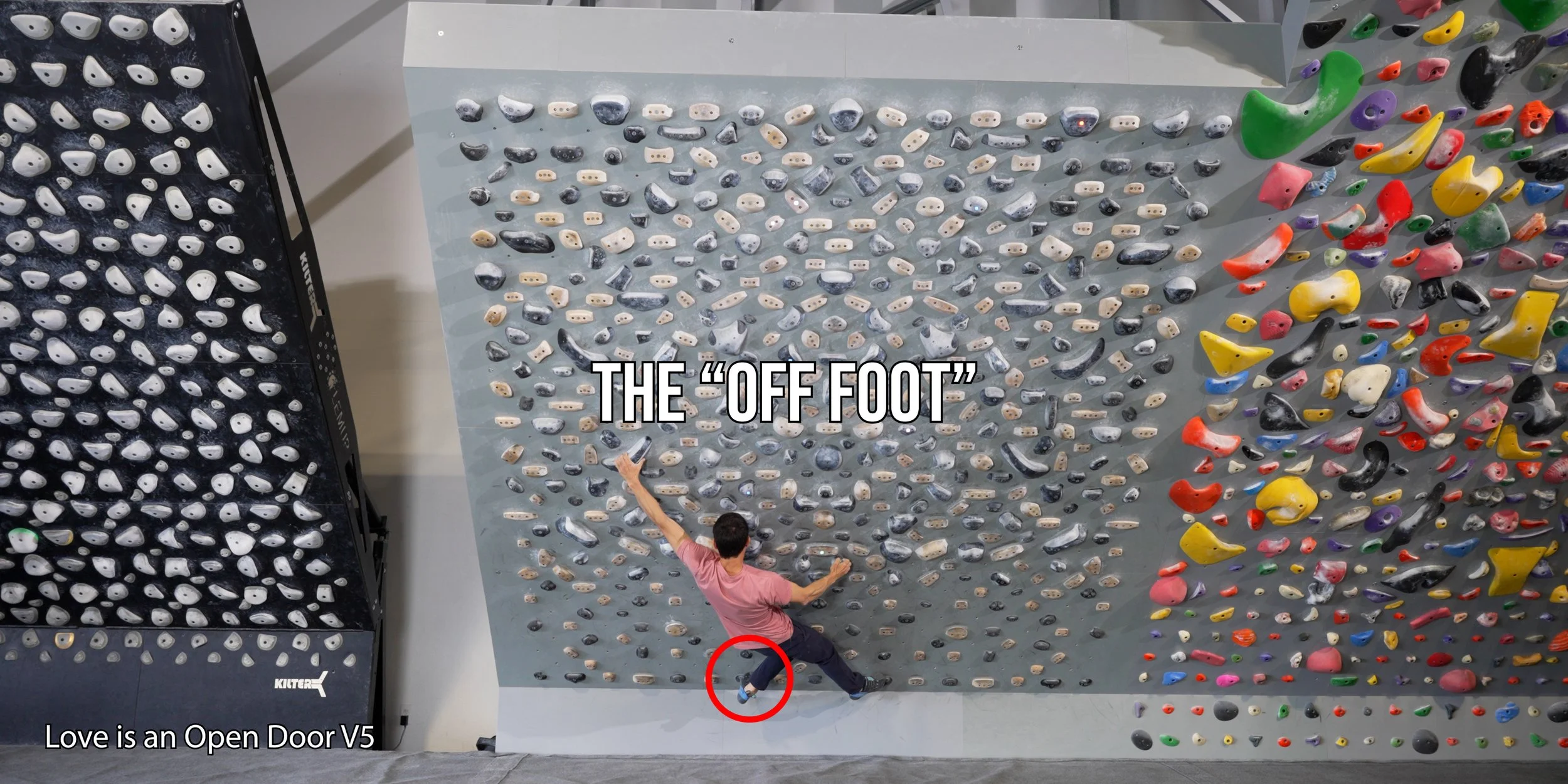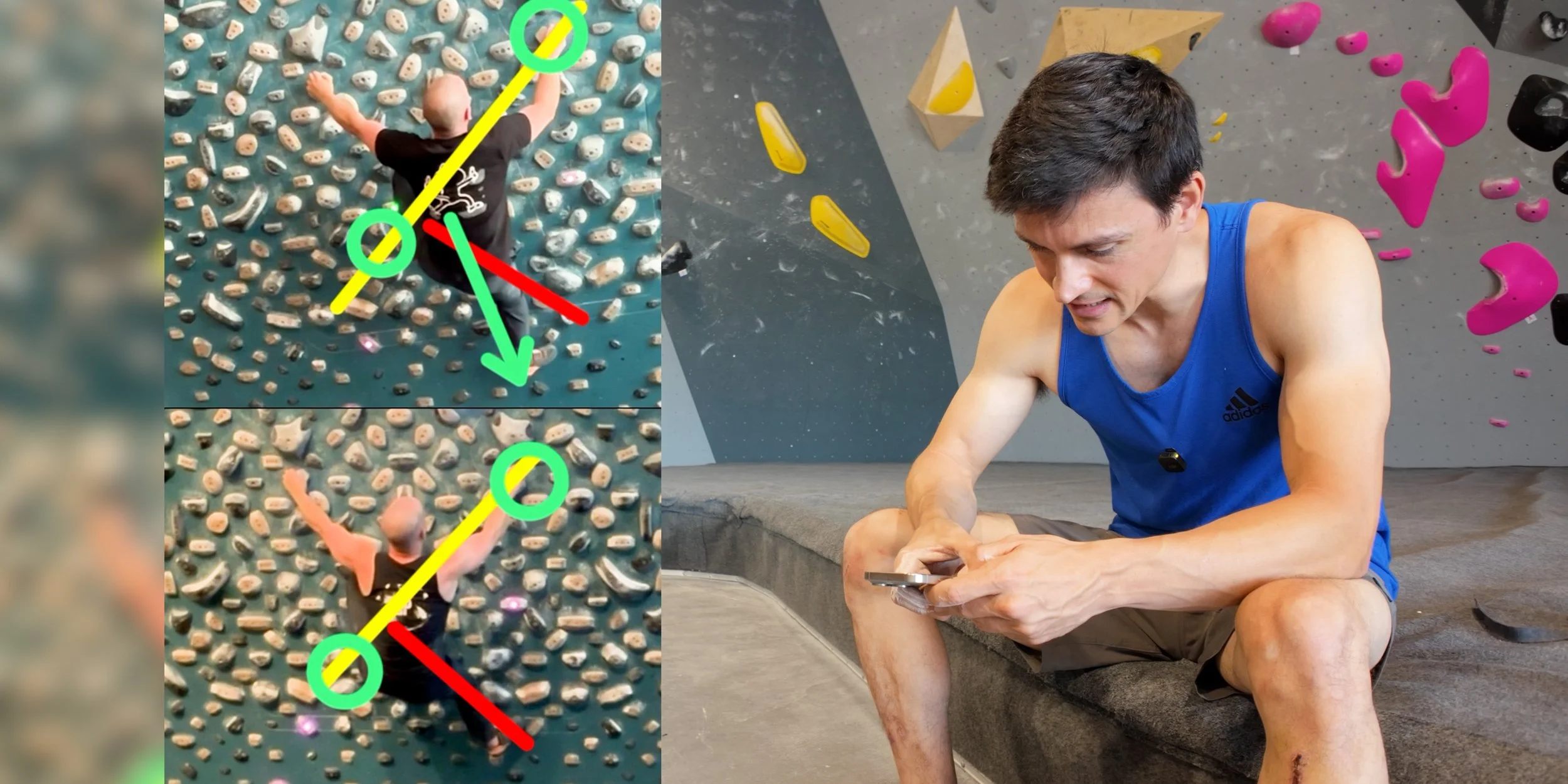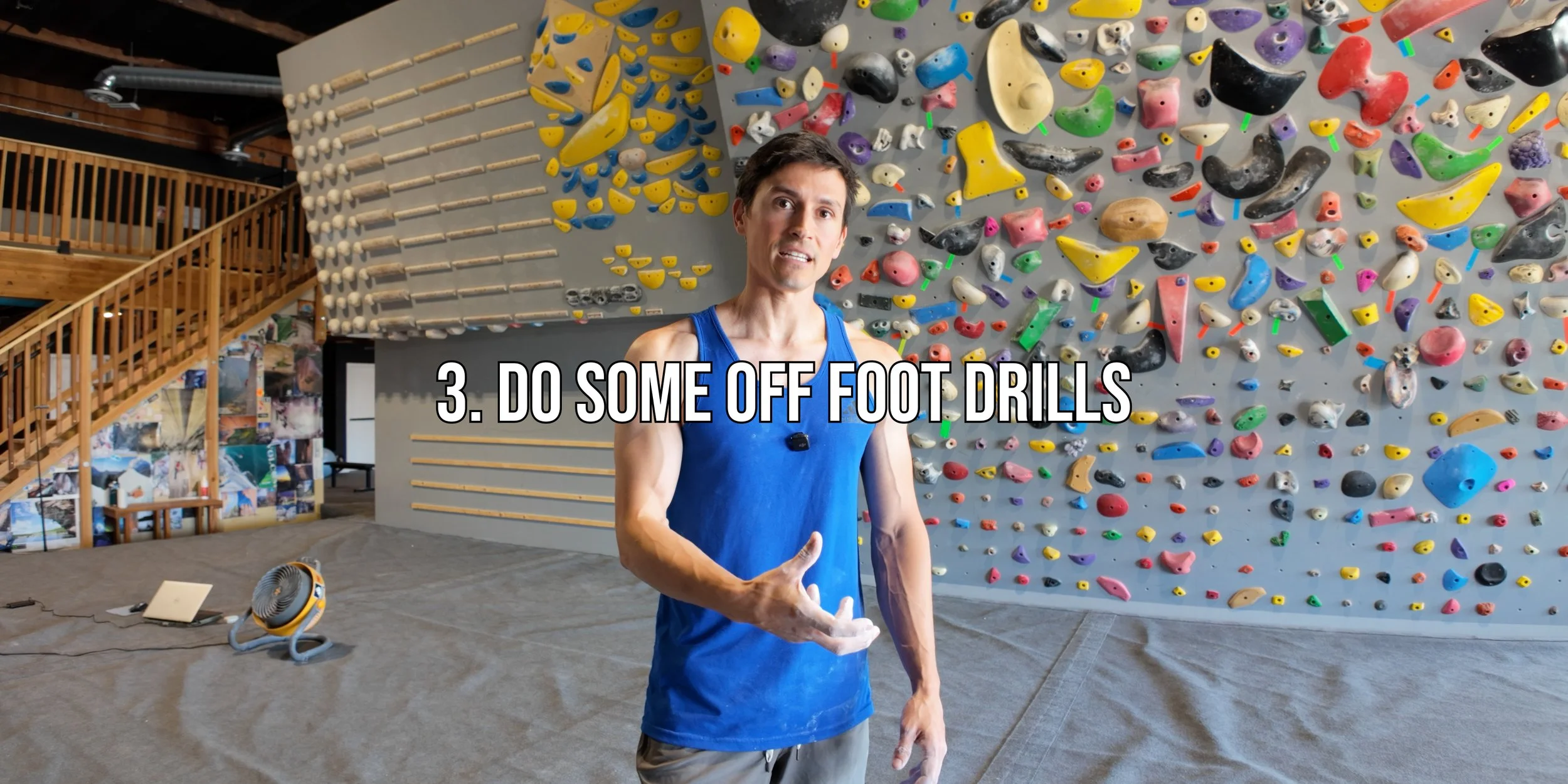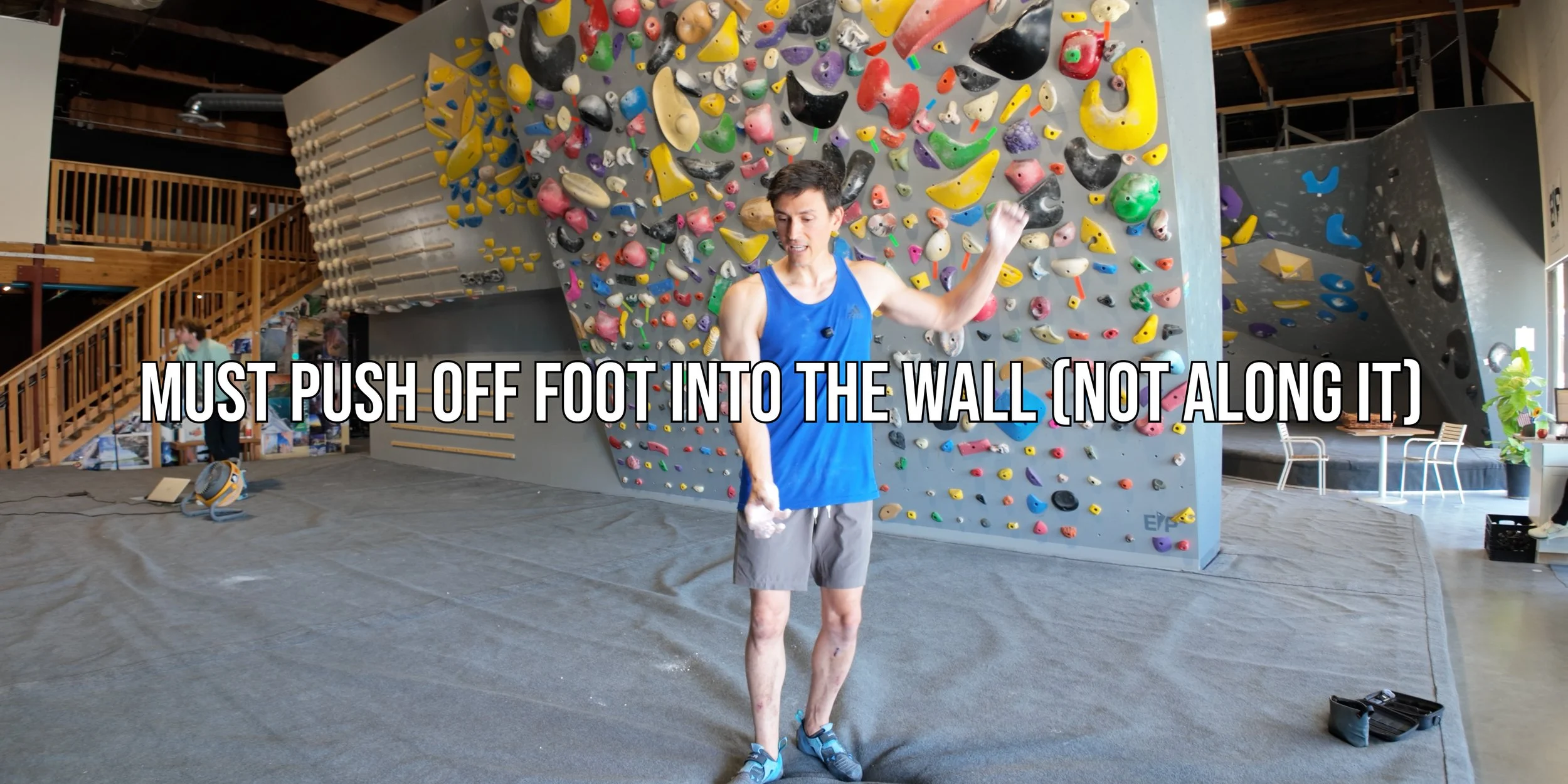The "Off Foot" is Climbing Technique #1 - Coaching w/ Dan
Hooper’s Beta Ep. 156
Intro
Today we’re talking about how to get the most out of your off foot when you climb.
Why the Off Foot Matters
The off foot plays a crucial role in almost all movements. Often the off foot isn’t on a clearly defined foothold, so climbers pay little attention to it. Despite that, even when it looks like it’s doing nothing, the off foot can:
Provide counterbalance.
Shift your center of mass.
Enable or prevent rotation.
Help dictate your body shape as you initiate and carry through a movement.
Because of that, it’s an unusually powerful cue in climbing—useful on almost any move at almost any level across your whole climbing career.
What Is the “Off-Foot”?
We’ve struggled to define this precisely, but here’s the practical version:
It’s generally the lower foot.
It’s often the foot you’re leaving.
It’s the one with less pressure going through it.
When watching someone climb, it’s usually obvious—it’s the foot that’s not doing the main thing on the move.
Let’s look at it in action.
Live Example
As you get on climbs closer to your limit—or climbs with smaller movement margins—off-foot use becomes increasingly important. But even on easier climbs it changes how well the movement flows, how nice it feels, and how efficient you are.
Check out this first move. If I just step on this big, obvious starting foot, back-brace on the lower foot, and reach—it’s pretty physical. I’m rowing in with one arm and kind of popping up. I can get above it, but it’s limited and strenuous—especially if this were near my limit.
Now watch what happens if I move my off foot. If I go open-hip or drop-knee into the same hand position, suddenly the move is easy. I can reach much farther.
Here’s what’s weird: the footholds are huge and "good," but if I stay square I have to pull and row. If I slide the off foot out and push straight into the wall, I get an easy little rotation. I just twist up instead of muscling it.
Another quick note: I’m on two big jugs and only need to match. If I stay in the plumb line and just sit, I can kind of make it work—until I come in from wider. Then I swing. If I simply dab my off foot where it controls the swing—no movement at all.
Common Problems When Climbers Ignore the Off Foot
Problem 1: Getting Trapped by “Good” Feet. Whether you’re cruising an easier climb and just standing on whatever looks good, or you’re outside projecting and see a perfect little spike out of position—it’s easy to put your foot where the hold is instead of where your body needs it. Pause and ask: Why am I putting my foot here? What position do I need?
Problem 2: Losing Tension on Diagonal or Directional Moves. Lots of climbing involves diagonal movement—up and over, or catching something while you swing in. If the off foot isn’t placed to manage tension, it will often slide or peel. When the off foot slips, you lose stored tension through the chain and fall.
Case Study: Noah’s Cross Move
Shout out to Noah for letting us use this footage—and congrats on sending the project.
Attempt 1: He sets up for a cross. Good hand accuracy—lands right on it. But his left foot floats off the wall. That lets the right hip drop, unloads the left foot, and he spins off. You could try to cue “open your hips,” “lock the shoulder,” etc.—but that gets complicated.
Instead, we’ll look only at the off foot.
Later Attempt (After Coaching): He shifts the off foot. Now, as he comes across, you see his weight load down into that foot. The move stops. He’s stable. Suddenly it goes every try.
Technical Lens: Axis of Rotation & Counterforce
This trick shines on cross-body positions—any time you’re loading one hand against the opposite foot.
Try this: Visualize (or draw on video) a line from your control hand to your primary foot. That line is your axis of rotation.
Now draw a line that’s roughly perpendicular to that axis, passing through the hip. The job of the off foot is to provide counter-rotation along (or near) that perpendicular. Slightly above or below works, but ~90° is the sweet spot. The more perpendicular the off-foot pressure, the more effective the counterforce. Less perpendicular = less control.
In Noah’s first attempt, his off foot sat off-angle—so when he rolled, his weight translated above the foot and it unloaded. In the corrected attempt, his off foot sits near-perpendicular. As he rolls through, weight drops onto the foot and he sticks the move.
How to Practice Off-Foot Use
1. Notice It. The off foot is easy to neglect. Simply remembering it exists and checking where it is will immediately improve your climbing.
2. Plan Ahead. Once you start noticing it, plan off-foot placements during visualization. When reviewing video—especially on problem moves—pause and ask: Where could I place the off foot to stabilize or control swing?
3. Drill Variations. Pick a move you can repeat several times. Change the off-foot location slightly each rep. Compare effort, reach, and control. This deliberate contrast fast-tracks learning.
Troubleshooting: “My Off Foot Just Skates Off the Wall”
If your off foot isn’t on an actual hold, you can’t stand on it the way you stand on an edge. When people are in roughly the right position but still skate, they’re usually trying to press down along the wall—as if there were a foothold under them.
Instead, push perpendicularly into the wall.
Different contact options:
Side toe press.
Top-of-toe drag/press.
Heel drop / smear.
Whichever you choose, always think: Into the wall. Not down. Not scraping along. Into.
A cool bonus: When you press hard into the wall with the off foot, you can convert many incut footholds—and even some round or smeary ones—into clamps or bicycles. This is hugely useful on steeper terrain and harder climbs.
Conclusion / Call to Action
If you’d like more personal coaching, head over to the Hooper’s Beta page for private coaching options.
If you’re working through an injury, we have a range of affordable, detailed recovery blueprints on the site.
Huge thanks to Flux (@fluxtrainingcenter) for hosting us and for providing one of San Diego’s finest training facilities here in Vista—with a Kilter Board and a TV2.
See you next time—and remember to like and subscribe if you want more Hooper’s Beta content!
DISCLAIMER
The Beta Agency is providing content on its website that aims to inform rock climbing enthusiasts and/or individuals interested in the field of physical therapy of the various physical conditions that may befall those engaged in the sport of rock climbing, for informational purposes only. None of the information provided by The Beta Agency should be regarded as medical advice or construed to be a medical diagnosis of any form. By using our products, services, and/or the information on our website, you acknowledge that you understand this information is not meant to be a substitute for medical advice from an appropriate licensed healthcare professional, and that you will not rely on any of the information you acquire from us as the sole basis, personally or as a suggestion to others, to make any healthcare-related decision(s). If you suspect that you may have a medical condition that you are trying to diagnose, we strongly urge you to seek the advice of an appropriate medical practitioner. If you have a medical emergency, you should contact emergency services immediately.
Click for full Terms and Conditions and Privacy Policy










